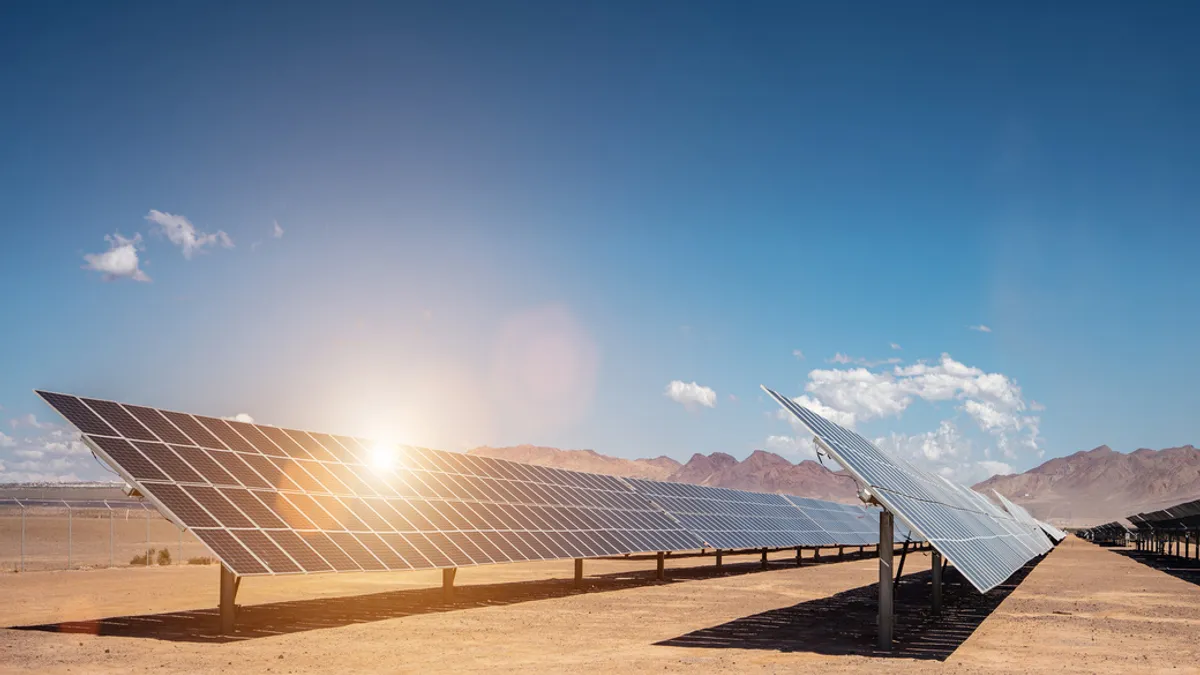When we think of protests for new energy systems, our minds initially go to fossil fuels. Rarely do solar PV (Photovoltaic) arrays come to mind.
But the truth is, solar is polarizing, plain and simple. Public opinion varies widely on its worth, and far more widely on whether they want large-scale solar farms in their own backyard.
Whether seen as unfortunate or fortunate, community sentiment holds significant sway in determining whether a project comes to fruition. This influence can result in delays and hurdles that developers may find challenging to overcome.
That does not mean solar proponents are powerless, however. By taking public sentiment into account before breaking land on their site (which requires first understanding where a particular community stands), developers can get much further, much more often.
Community Sentiment: Two Sides to Every Coin
When a developer brings a solar proposal into a community, opinion will naturally vary among the affected populace.
Resistance to solar installations in rural areas doesn't just come from a distaste for renewable energy technologies. Concerns over noise pollution, solar power plant fires (as seen in New York), land infringement, and environmental impacts are at the forefront of the resistance to solar power generation conversation.
Despite their small size, such groups still present a major risk.
A Clear and Present Danger to Energy Goals
In recent years, the Biden Administration has set some lofty energy transition and sustainability goals for the coming decades, and thus far, we don’t seem likely to hit them.
Communities have good reason to protest development, of course. For instance, says Brookings, “Sparsely populated and sunny areas in San Bernardino County could be ideal for solar development. However, local residents argue that such projects disturb pristine desert, scenic views, and wildlife habitat. The prohibition eliminates more than one million acres of private land from development.”
This perspective is not unreasonable, but when it clashes with California's requirement to transition 60% of its electricity generation to renewable sources by 2030, it poses a dilemma.
Not all communities are opposed, of course. Indeed, some are champing at the bit for renewable energy development.
Those who live in impoverished communities, areas near coal-fired power plants, or live in otherwise environmentally compromised places are likelier to favor solar. This, in turn, affects how likely solar-positive energy policy is to pass.
So, where a community is not already engaged, how can you make sentiment more positive?
Methodology for Engaging Communities in Renewables
There exist several ways to reduce the opposition to solar development.
The first is to choose areas to which people are unlikely to object wherever possible. For instance, says Brookings, “Building on previously disturbed land and combining renewable power with other land uses, like agriculture or building solar on rooftops, can minimize land use conflicts.”
Second, according to a Twitter-mining study, “States that wish to gain public support for solar energy might want to consider implementing consumer-friendly net metering policies and support the growth of solar businesses.”
Third, inclusive conversation can make a big difference.
If you don’t make an effort to directly engage with communities, then unfortunately, they’ll likely get most of their information from public interest groups, who don’t necessarily have the environment’s best interests at heart (or those of the community in question).
Solar developers can communicate with cities about the importance of solar development. Cities that then promote solar on their official government websites can help sway their population to the importance of renewable energy projects using a variety of arguments: environmentalism, public health, and cost savings are prime among them.
The messaging for disadvantaged communities is particularly clear, adds the Department of Energy: “Low-income households spend 8.6% of their income on energy costs, or three times more than non-low-income households. For families at or below 100% of the Federal Poverty Level, the average energy burden is 16%, or nearly 1/6th of household income.”
Overcoming Uncertainty With Transect’s
Community Sentiment Layer
One of the greatest barriers to solar projects, beyond negative community sentiment, is simply not knowing what the sentiment is. This puts developers in the position of proceeding with the project decision-making and planning processes without knowing whether they’ll face roadblocks later.
Happily, Transect is in beta testing new layers to help overcome this barrier. The tool analyzes news forums and existing solar fields to evaluate community sentiment regarding renewable development in their area, creating a report in mere minutes.
The AI-based solar sentiment algorithm can create a picture of how a certain community potentially feels about a project before it even begins. This allows developers to avoid certain areas or create plans to engage communities ahead of time, rather than spend money on mitigation efforts in the future and becoming a case study on how not to incorporate utility-scale solar into a community.
This, combined with the automated environmental site assessment provided through Transect Reports in minutes, allows land developers to assess their site with every ecosystem and impact in mind.
The takeaway? No longer will solar developers and stakeholders be stuck wondering and hoping their project doesn’t yield any negative social impacts. There is a solution today.
Get in touch with the Transect team or visit Transect’s website to learn more.










